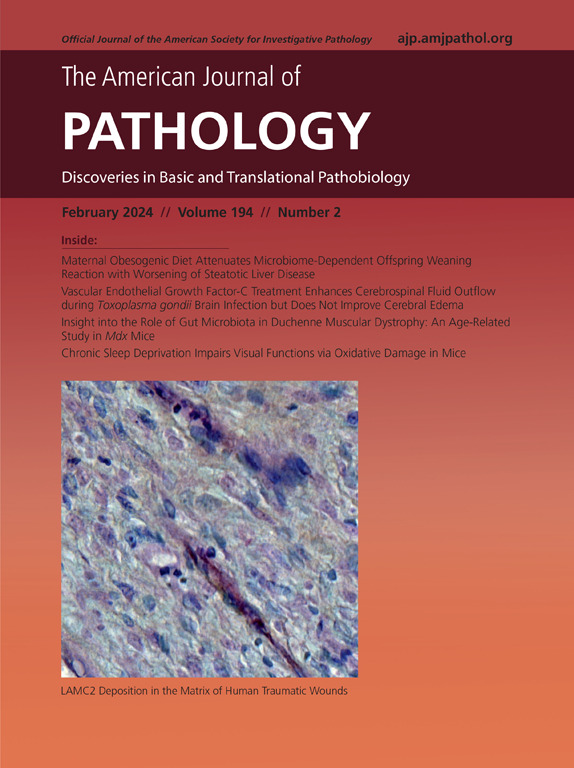Glycosylation Triggers Cathepsin D Maturation and Secretion to Promote Gastric Cancer Development
IF 3.6
2区 医学
Q1 PATHOLOGY
引用次数: 0
Abstract
Cathepsin D (CTSD) is a lysosomal aspartic protease with high expression in cancers. CTSD localized in different subcellular regions performs distinct roles. However, the precise regulation of its intracellular trafficking and extracellular secretion remains incompletely understood. This study showed that glycosylation modifications of CTSD determined its maturation and secretion in gastric cancer (GC) cells. Specifically, glycosylation at asparagine 134 (N134) dictated the intracellular trafficking and maturation of CTSD within lysosomes, through facilitating its sorting into COPII vesicles. Glycosylation at asparagine 263 (N263) was essential for the secretion of the proenzyme form of CTSD (pro-CTSD) via a novel pathway dependent on the small GTPase Rab3D. Notably, the extracellular release of pro-CTSD occurred more rapidly than its intracellular trafficking from the endoplasmic reticulum to lysosomes. This enhanced secretion speed may rapidly elevate the levels of pro-CTSD in the tumor microenvironment in response to extracellular stimuli. Ultimately, glycosylation at N134 and N263 regulated the autophagy and cell proliferation, respectively. These findings show the role of glycosylation in triggering the maturation and secretion of CTSD in GC cells. Through modulating its cellular trafficking, differential glycosylation modifications of CTSD defined the malignant behavior of GC cells.
糖基化触发组织蛋白酶D的成熟和分泌,促进胃癌的发展。
组织蛋白酶D (CTSD)是一种在癌症中高表达的溶酶体天冬氨酸蛋白酶。定位于不同亚细胞区域的CTSD发挥着不同的作用。然而,其胞内运输和胞外分泌的精确调控仍不完全清楚。本研究表明,CTSD的糖基化修饰决定了其在胃癌细胞中的成熟和分泌。具体来说,天冬酰胺134 (N134)的糖基化通过促进CTSD在COPII囊泡中的分选,决定了溶酶体内CTSD的细胞内运输和成熟。天冬酰胺263 (N263)的糖基化是通过依赖于小GTPase Rab3D的新途径分泌前ctsd所必需的。值得注意的是,前ctsd的细胞外释放比其从内质网(ER)到溶酶体的细胞内运输发生得更快。这种增强的分泌速度可能会迅速提高肿瘤微环境中原ctsd的水平,以响应细胞外刺激。最终,N134和N263的糖基化分别调节自噬和细胞增殖。这些发现证明了糖基化在触发GC细胞中CTSD的成熟和分泌中的作用。通过调节其细胞运输,CTSD的不同糖基化修饰定义了GC细胞的恶性行为。
本文章由计算机程序翻译,如有差异,请以英文原文为准。
求助全文
约1分钟内获得全文
求助全文
来源期刊
CiteScore
11.40
自引率
0.00%
发文量
178
审稿时长
30 days
期刊介绍:
The American Journal of Pathology, official journal of the American Society for Investigative Pathology, published by Elsevier, Inc., seeks high-quality original research reports, reviews, and commentaries related to the molecular and cellular basis of disease. The editors will consider basic, translational, and clinical investigations that directly address mechanisms of pathogenesis or provide a foundation for future mechanistic inquiries. Examples of such foundational investigations include data mining, identification of biomarkers, molecular pathology, and discovery research. Foundational studies that incorporate deep learning and artificial intelligence are also welcome. High priority is given to studies of human disease and relevant experimental models using molecular, cellular, and organismal approaches.

 求助内容:
求助内容: 应助结果提醒方式:
应助结果提醒方式:


